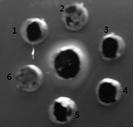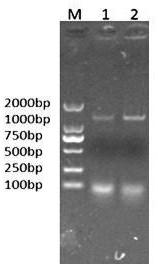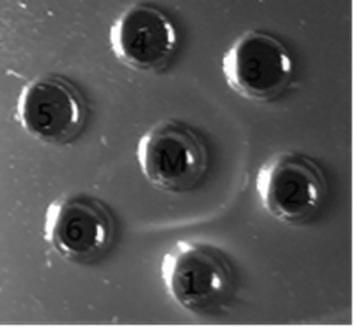Cell-adapted strain of supervirulent chicken infectious bursal disease virus and its application
A chicken infectious and bursal disease technology, applied in the direction of viruses, antiviral agents, viruses/bacteriophages, etc., can solve problems such as potential safety hazards in chicken flocks, decline in the protective effect of moderately virulent live vaccines or highly toxic inactivated vaccines, etc. , to achieve stable immune efficacy, good immunogenicity, and long-lasting effects
- Summary
- Abstract
- Description
- Claims
- Application Information
AI Technical Summary
Problems solved by technology
Method used
Image
Examples
Embodiment 1
[0030] Embodiment 1: Isolation and identification of chicken infectious bursal disease virus IBDV-CL strain
[0031] In March 2011, a suspected infectious bursal disease outbreak occurred in a large chicken farm in Henan. Chickens with typical clinical symptoms were selected to collect bursa, liver, spleen, lung, kidney and other tissues aseptically. Homogenize and grind, add penicillin 1,000U / mL, streptomycin 1,000U / mL sterilized saline at a volume ratio of 1:5 to make a tissue suspension, put in a refrigerator at 2-8°C, inhibit bacteria for 2 hours, and freeze repeatedly After thawing for 3 times, centrifuge at 4000rpm for 10min, take the supernatant, filter it with a sterile filter, and store it at -20°C for later use.
[0032] 1. Inoculation of virus in chicken embryos
[0033] The diseased material obtained from the above treatment was inoculated with 9-11 day-old SPF chicken embryos through the chorioallantoic membrane, 0.2 mL per embryo, hatched at 37°C, and the eggs w...
Embodiment 2
[0045] Example 2: Screening and identification of cell-adapted strains
[0046] 1. Cell-adapted virus seed preparation
[0047] Prepare chicken embryo fibroblasts (CEF) according to the method of "Chinese Veterinary Pharmacopoeia" 2010 edition. After the CEF cells grow into a single layer, discard the cell culture medium and wash with PBS solution for 3 times to remove non-adherent, aging and dead cells. and cell surface serum, the virus of the E5 generation was diluted with a sterile medium (DMEM culture fluid), inoculated on a single layer of cells, adsorbed in a 37°C incubator for 1h, and added to a virus maintenance solution (2% serum DMEM culture fluid) ), 37°C CO 2 Harvest in an incubator for 96 hours, or when the lesion reaches about 80%, harvest in a sterilized container after freezing and thawing three times, and store at -70°C for later use. According to this method, the cells were continuously blindly passed for 20 generations until the cells produced stable typic...
Embodiment 3
[0057] Embodiment 3: the biological characteristic determination of chicken infectious bursal disease virus strain
[0058] 1. Chicken embryo median lethal dose (ELD) of IBDV-CL strain 50 ) determination
[0059] The IBDV-CL strain was diluted 10 times, and 10-day-old SPF chicken embryos were inoculated through the CAM route. Five chicken embryos were inoculated for each dilution, and the inoculation volume was 0.1 mL. The dead embryos within 24 hours were observed until 144 hours, and the death of chicken embryos in each group was recorded. According to the Reed-Muench method, the chick embryo median lethal dose (ELD) of the virus in every 0.1 mL of cell culture fluid was calculated. 50 ), the results are shown in Table 2.
[0060] Table 2 Mortality of inoculated SPF chicken embryos and ELD of IBDV isolates 50
[0061]
[0062] 2. The cell half infection dose (TCID) of CL40 strain 50 ) determination
[0063] The virus that has been stably transmitted to the 8th pass...
PUM
 Login to View More
Login to View More Abstract
Description
Claims
Application Information
 Login to View More
Login to View More - R&D
- Intellectual Property
- Life Sciences
- Materials
- Tech Scout
- Unparalleled Data Quality
- Higher Quality Content
- 60% Fewer Hallucinations
Browse by: Latest US Patents, China's latest patents, Technical Efficacy Thesaurus, Application Domain, Technology Topic, Popular Technical Reports.
© 2025 PatSnap. All rights reserved.Legal|Privacy policy|Modern Slavery Act Transparency Statement|Sitemap|About US| Contact US: help@patsnap.com



